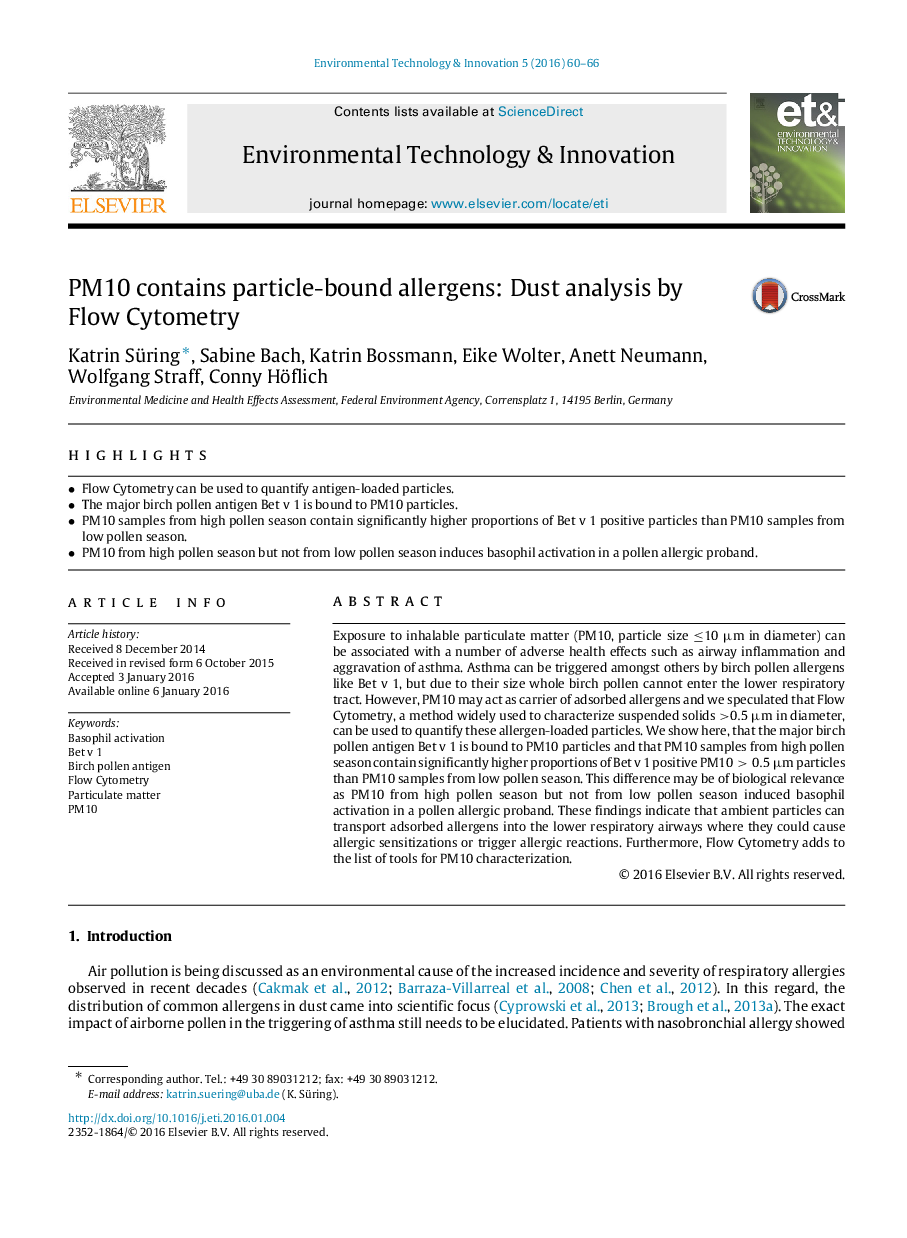| Article ID | Journal | Published Year | Pages | File Type |
|---|---|---|---|---|
| 4428195 | Environmental Technology & Innovation | 2016 | 7 Pages |
•Flow Cytometry can be used to quantify antigen-loaded particles.•The major birch pollen antigen Bet v 1 is bound to PM10 particles.•PM10 samples from high pollen season contain significantly higher proportions of Bet v 1 positive particles than PM10 samples from low pollen season.•PM10 from high pollen season but not from low pollen season induces basophil activation in a pollen allergic proband.
Exposure to inhalable particulate matter (PM10, particle size ≤10μm in diameter) can be associated with a number of adverse health effects such as airway inflammation and aggravation of asthma. Asthma can be triggered amongst others by birch pollen allergens like Bet v 1, but due to their size whole birch pollen cannot enter the lower respiratory tract. However, PM10 may act as carrier of adsorbed allergens and we speculated that Flow Cytometry, a method widely used to characterize suspended solids >0.5 μm in diameter, can be used to quantify these allergen-loaded particles. We show here, that the major birch pollen antigen Bet v 1 is bound to PM10 particles and that PM10 samples from high pollen season contain significantly higher proportions of Bet v 1 positive PM10>0.5 μm particles than PM10 samples from low pollen season. This difference may be of biological relevance as PM10 from high pollen season but not from low pollen season induced basophil activation in a pollen allergic proband. These findings indicate that ambient particles can transport adsorbed allergens into the lower respiratory airways where they could cause allergic sensitizations or trigger allergic reactions. Furthermore, Flow Cytometry adds to the list of tools for PM10 characterization.
